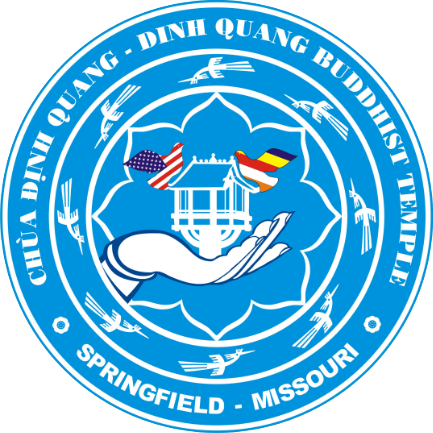
Vesak is the celebration of Sakyamuni Buddha, including his: birth, renunciation of worldly life, Enlightenment, teaching of the Dharma, and death and achievement of Parinirvana. In turn, it is also a celebration of Buddhist community, those who hear the Buddha’s teachings and devote themselves to practice. This is why the Buddhist flag is usually prominent at our Vesak celebrations.
Even though we call to mind the Buddha’s life and teachings at Vesak, the focal point is on the birth of Siddartha Gotama and the central image is of Gotama as a child. He is standing with the right hand pointing upwards (declaring his future Buddhahood) and the left hand pointing to the earth (calling the earth as a witness that he will achieve Enlightenment). The two mudras bring together heaven and earth, above and below, in wholeness.
The image is based on a story of the Buddha’s birth. He immediately stood and took seven steps, with lotus flowers blossoming under his feet. At the last step, he declared that he was the World-Honored One:
“This is the last birth.
There is now no more coming to be.”
Similar to pointing above and below, the seven steps represent the seven directions (the four cardinal directions, up, down, and here or within). This is another reminder of the completeness of the practice and the wholeness of the teachings.

Bathing of the Baby Buddha
Vesak ceremonies include a ritual for Bathing the Baby Buddha, which commemorates the moment when the Buddha-to-Be declared this would be his final birth. The statue of the child is placed within a basin of perfumed water. The community takes turns mindfully filling a ladle from the basin and gently pouring it over the shoulders of the Buddha.
This ritual is based on the story that, at the Buddha’s birth, the skies opened, and streams of cleansing water washed the child and his mother. When bathing the Buddha at Vesak, we remember this and apply it to our own practice. We dip the ladle three times and aspire that our practice will bring freedom from harm, an abundance of good results, and liberation from suffering for all beings.
These practices also remind us of our own capacity for Awakening, especially with the support and encouragement of a community.

Watering Seeds of Understanding
When we remember our own capacity for Awakening, we also remember this capacity exists in others, and vice versa. When each of us practices the Vesak aspirations (freedom from harm, abundance of good, and liberation from suffering), the entire community benefits. This is one reason why we cannot separate the Buddha’s Enlightenment from Buddhist community. The Buddha set the wheel of the Dharma in motion, opening to us all the way of practice that leads to the end of suffering.
When we practice skillfully together, we water the seeds of understanding and compassion in ourselves and one another. And when we understand the meaning of Bathing the Buddha, we can bring the same energy and intention to our everyday activities. At Vesak, we learn to mindfully wash the Buddha image, so now we also know that we can wash our hands or dishes with mindfulness. Every moment can be transformed into the practice of understanding, compassion, and joy.
